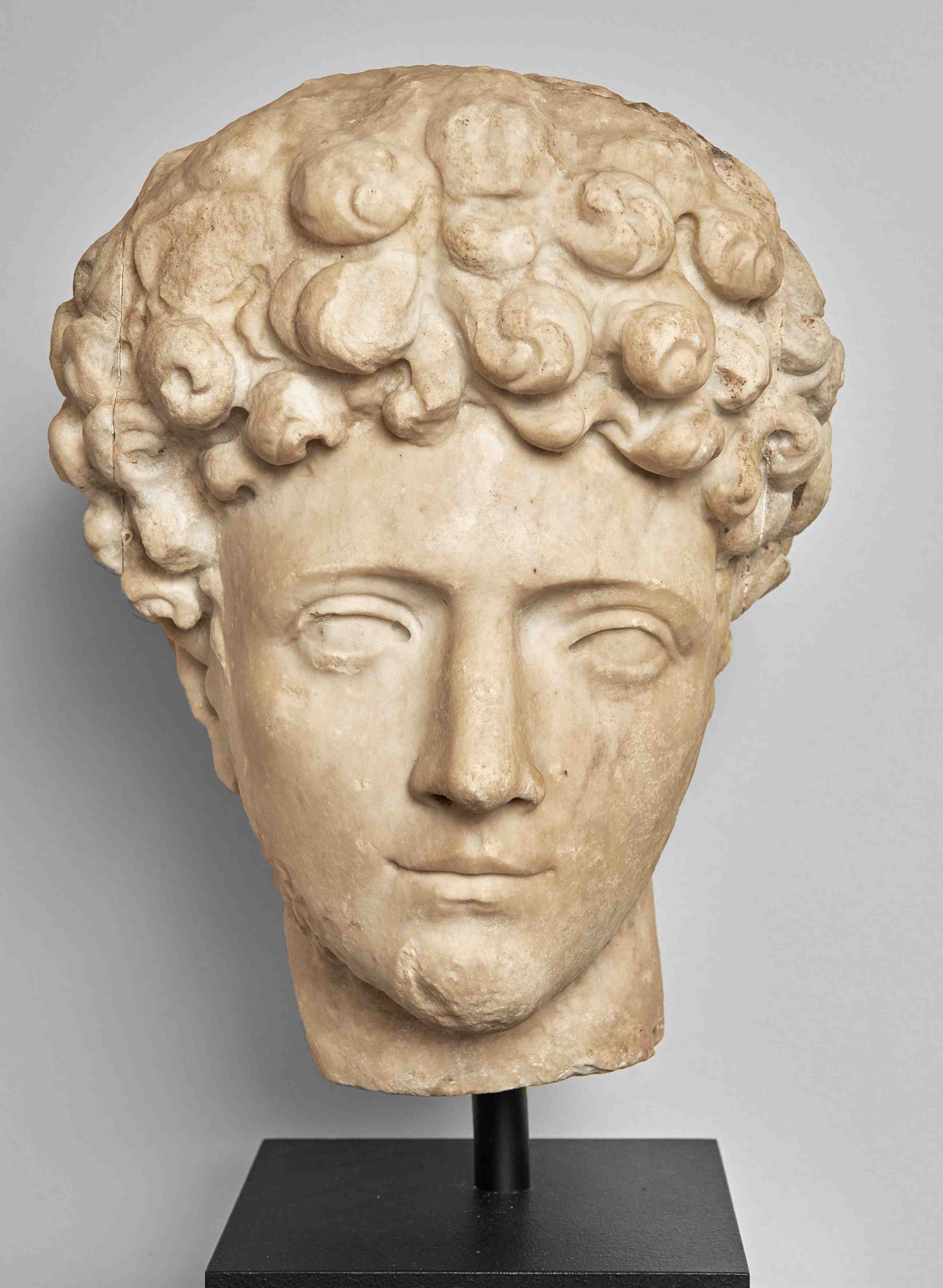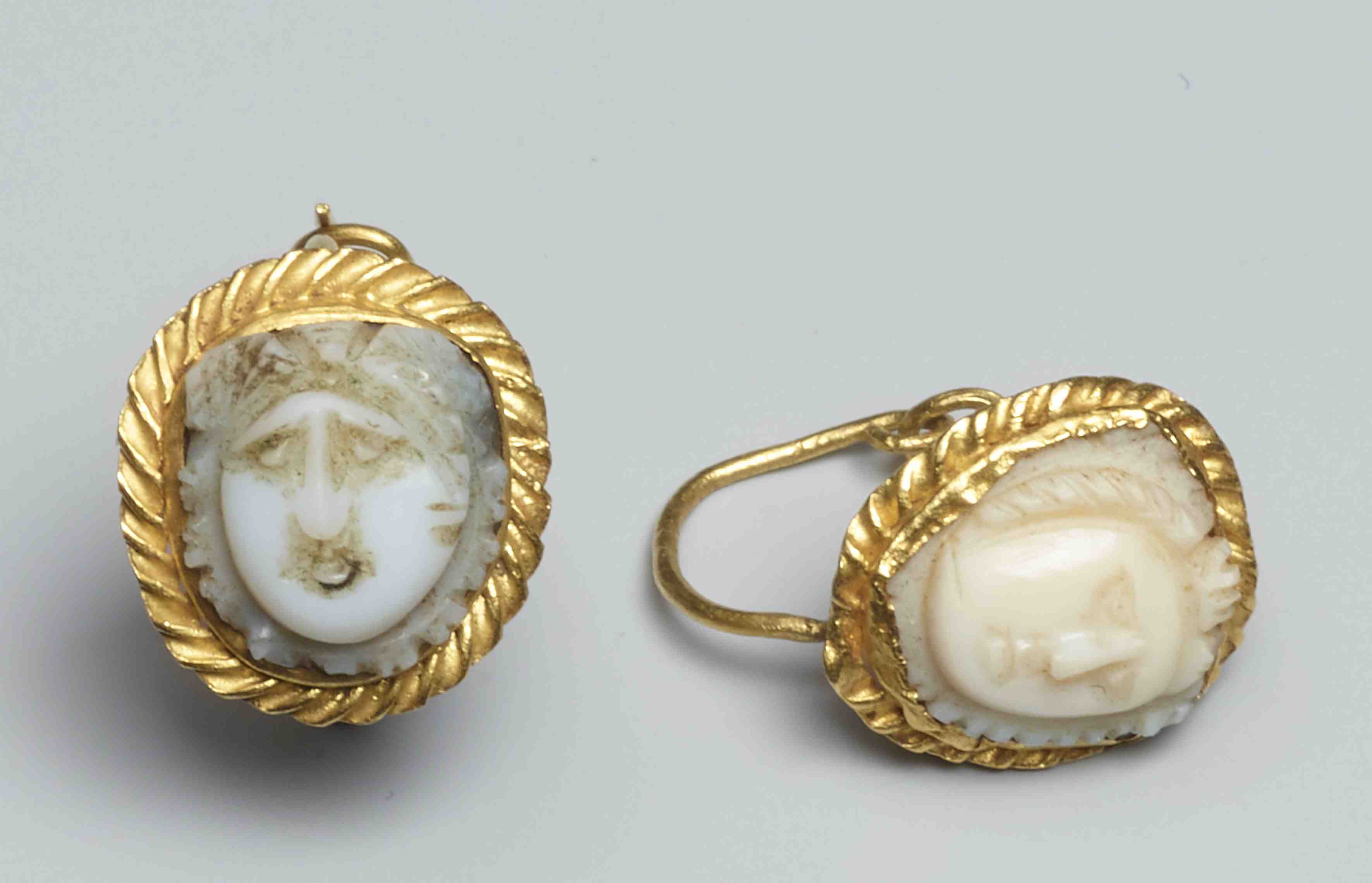Roman marble portrait bust of an aristocratic lady, possibly Aggripina
Almost life-size, wearing tunica and palla draped over the left shoulder, her hair worn in an elaborate coiffure consisting of several rows of tight ringlets, drilled in their center, the back of the head with twisted plats and bound in a braid, a ribbon in the middle of the head, its ends falling on both sides of the neck.
Professor Elia Volpi (1858-1938), Florence, prior to 1910
Château de Beaumesnil, Normandy, prior to 1983
Art Market, Rouen, 20 February 1983
Swiss private collection, acquired before 2007
http://arachne.uni-koeln.de/item/marbilderbestand/1059776
http://arachne.uni-koeln.de/item/marbilderbestand/1059777
Précieuses Collections d'Objets d'Art appartenant au Prof. Elia Volpi dont la vente aux enchères publiques aura lieu à Florence, Maison de vente - Jandolo et Tavazzi de Rome, 25 avril - 3 mai 1910, lot 53
B. Freyer-Schauenburg, Porträtbüste einer Dame in Schweizer Privatbesitz, in: Baki Ö?ün'e Arma?an (Mélanges offerts à Baki Ö?ün), VII, 2007, 97-108, Abb. 1-5.
H. R. Goette, Das Bildnis des Marcus Vilonius Varro in Kopenhagen, Boreas 7 (1984) 89-104; K. Fittschen, Von Einsatzbüsten und freistehenden Büsten: Zum angeblichen Bildnis der „Keltenfürstin Adobogiona“ aus Pergamon, in: Rome et ses provinces. Genèse & Diffusion d’une Image du Pouvoir, Hommages à J.-C. Balty (2001) 109 ff.
About the collection of Schloss Beaumesnil see Hans Fürstenberg Le Grand Siècle en France et ses bibliophiles. Volumes à provenance, manuscrits et documents de la Fondation Furstenberg-Beaumesnil et de la Collection Jean et Eugénie Furstenberg. Hauswedell, Hamburg 1972, 145
On Domitilla the Elder cf. Susan Wood, Who was Diva Domitilla? Some Thoughts on the Public Images of the Flavian Women. 148ff., American Journal of Archaeology (AJA), vol. 114, no. 1 (Jan., 2010), pp. 45-57
For a comparable portrait bust, see Agrippina Minor at the NY Carlsberg Glyptothek, Copenhagen (Acc. no. 755). Another similar piece is preserved at the Ostiense Museum.
This portrait is strikingly attractive because of the sitter’s delicate yet exotic features and her elaborate coiffure. The sculpture was produced during a formative and highly sophisticated phase of Roman art, and one whose portraits of women are much less common, than those from later Imperial times. The preparation for a patch at the back of the head is seemingly ancient. Although she remains anonymous, given the sculpture's scale and scope, one can assume it portrays a person of note, who wished to be represented with the ideal and distinctive features of a Roman aristocrat.












